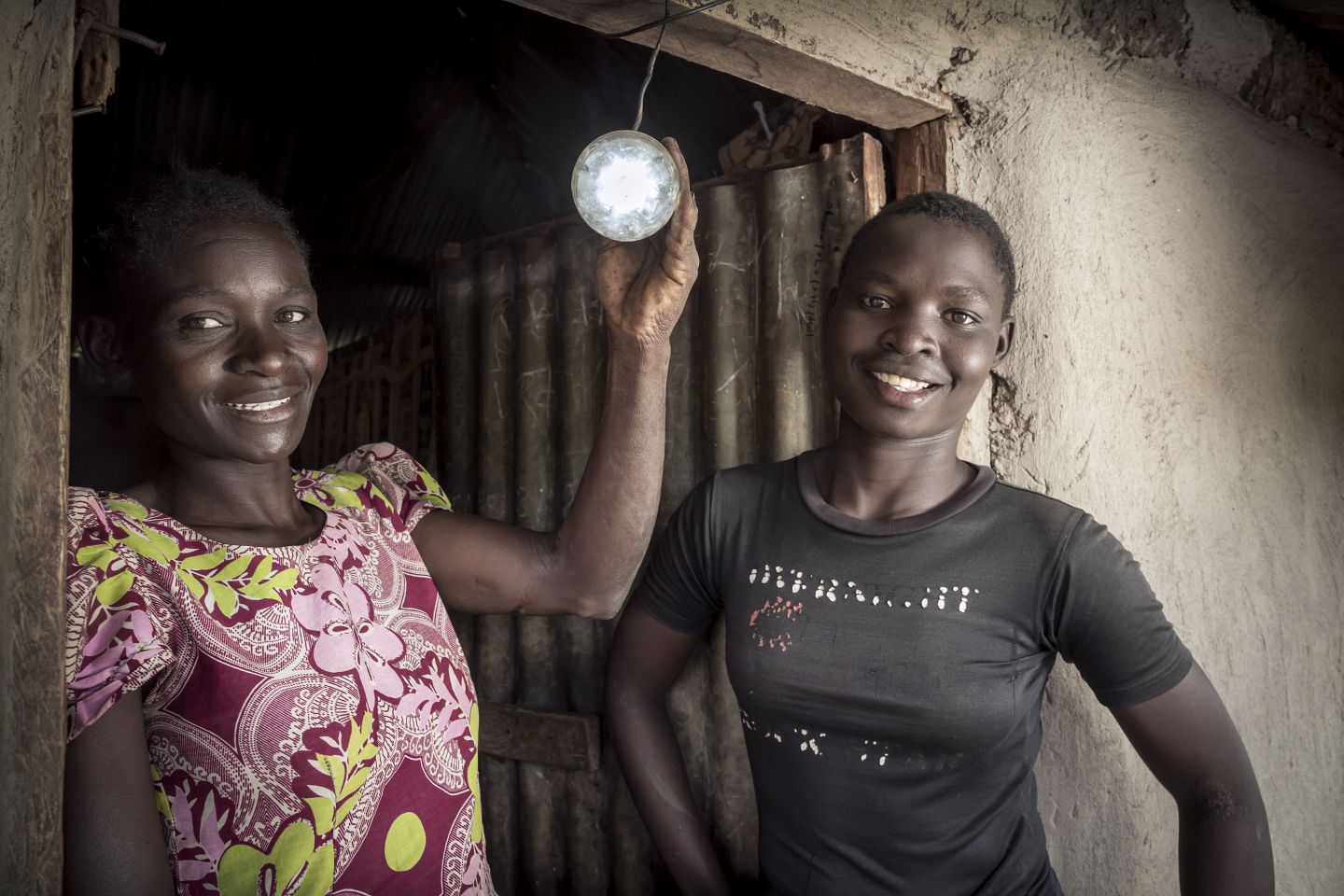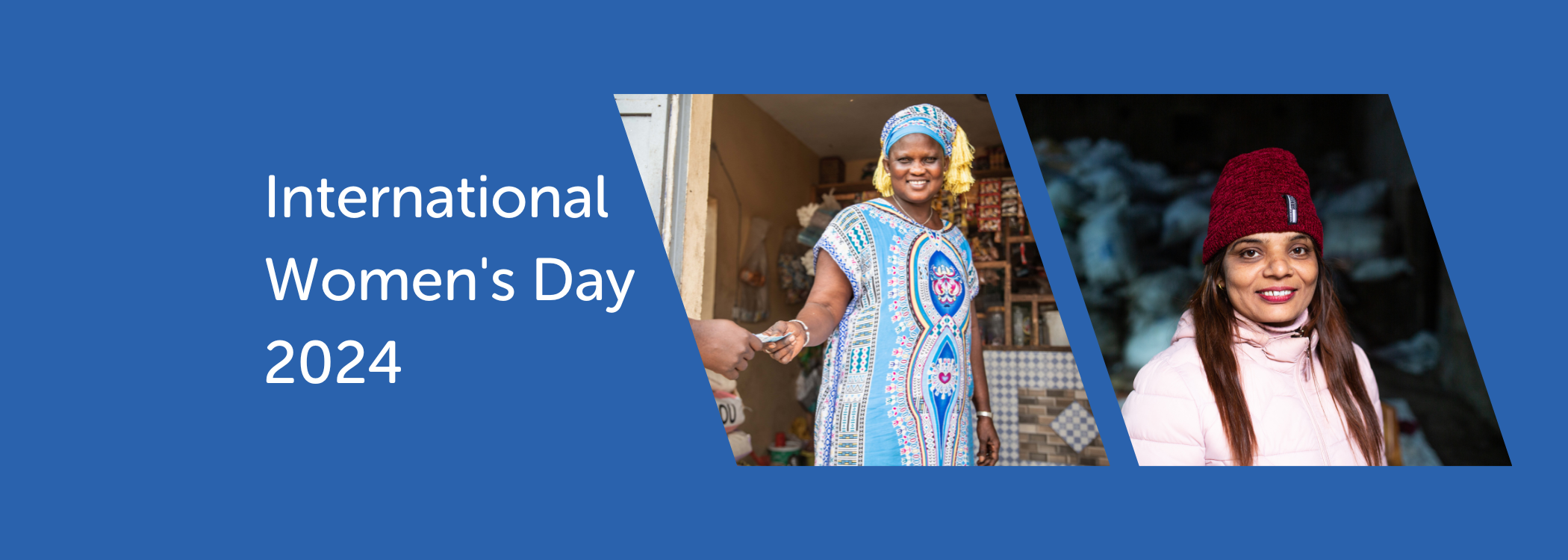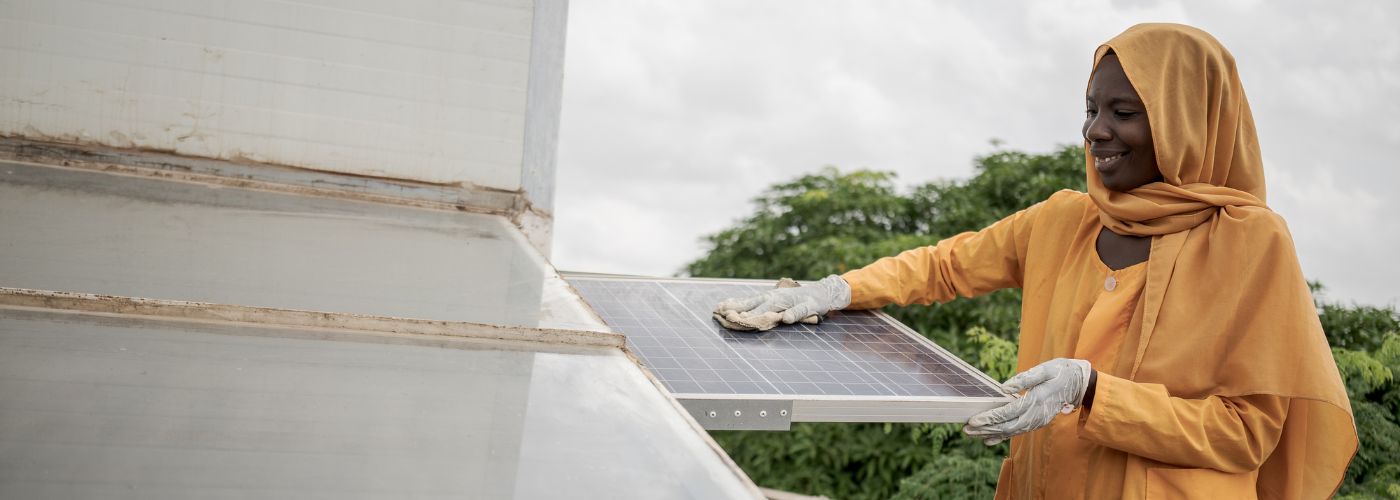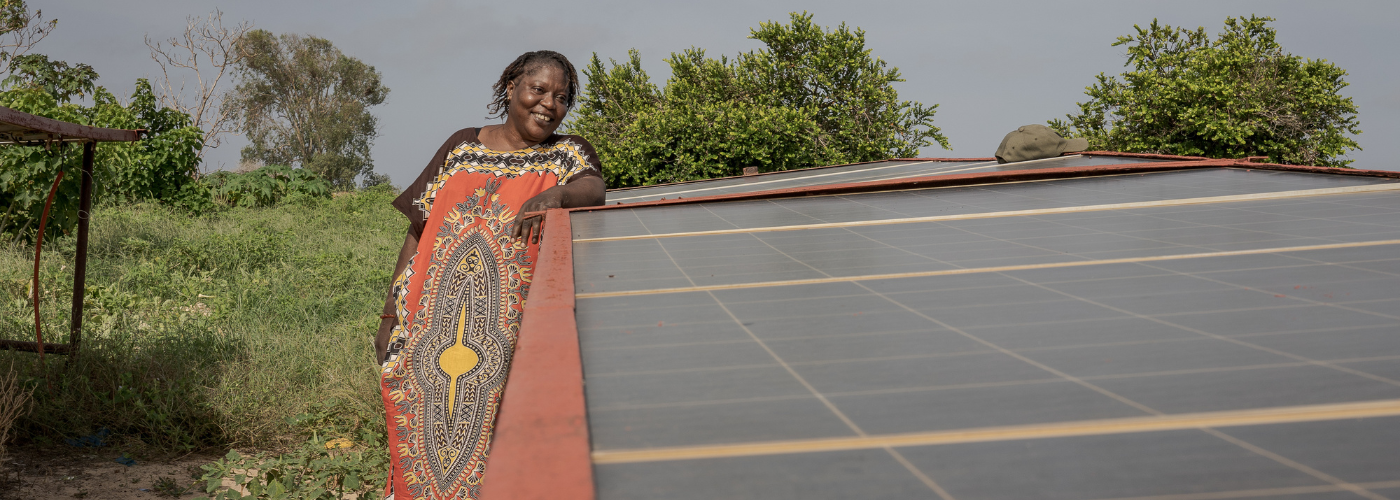The following article has been written by Dr. Magi Matinga. Dr. Matinga works on modern cleaner energy access, transitions, and gender mainstreaming, focusing on research, policy analysis, project and programme development. She was a member of the research team who studied factors that enhance and restrict women’s empowerment through electrification. The findings of this study are laid down in the report Women’s empowerment and electricity access: How do grid and off-grid systems enhance or restrict gender equality?
Electricity in its different configurations—grid, mini-grids, solar home systems (SHS), lanterns, generators etc.—is slowly making its way to previously un-electrified parts of the world. But who actually gets this electricity? How is it used differently by different household members or a community, especially women and men? Our research has been set out to find out and specifically to assess, whether and how electricity empowers women. The study (hyperlink) was conducted in India, Kenya, and Nepal between 2014 and 2019, and was part of wider efforts to investigate the energy and gender nexus. These efforts, supported by the UK’s Department for International Development (DfID), covered 12 countries and six thematic areas (hyperlink). For our research, empowerment was defined beyond increasing numbers of women with access to electricity or increasing the number of women energy entrepreneurs. We looked at empowerment as including gender norms and ideologies, long and short term resources, human and social resources, influence over everyday decisions, life decisions, decisions over electricity in the households, and involvement in and influence over electricity systems etc. (See framework here- hyperlink). The research conducted 273 in depth interviews, life histories, key informant interviews, focus group discussions, and 642 household surveys.
Key findings
The study found a pattern in India and Kenya: regardless of type of access, women-headed households, especially widows and divorcees, were less likely to have electricity than men-headed households. The study also shows that just because a community has access to electricity does not mean that women’s needs were adequately addressed. For example, 39% of households in Homa Bay—one of the Kenyan sites—did not have electric light in the kitchen, a space that is considered women’s and where adequate lighting could reduce workload and improve safety. Also in Homa Bay, where women are largely responsible for collecting water, water pumping did not benefit from electrification. Women continued to spend an average of 1.5 hours per day, collecting water for domestic use.
Other areas where women’s needs were not adequately met include the use of energy to enhance the performance of an income generating activity (Productive Use of Energy, PUE). Here we see a division of the type of activities women and men are engaged in. Women’s businesses often center around their traditional roles—for example as cooks, where the key energy need is thermal fuels—and are often home based. Meanwhile, in our study areas, electricity powered activities, such as carpentry, printing, welding, and irrigation are largely owned and operated by men. Thus unintentionally, with the provision of electricity, energy was provided for men’s productive uses but not women’s. This can reinforce or exacerbate gender inequalities by increasing income gaps.
Other than access, the research showed that where energy interventions are gender neutral, women do not benefit through involvement in the supply system. Out of ten interventions assessed for this study, seven did not employ women and the other three only employed women in administrative positions.
Did the research find positives in the gender and energy nexus?
When women’s energy needs were catered for, for example by providing access, adequate capacity, and availability of women-dominant appliances, significant benefits have been reported. In Nepal, rice cookers, found in 23% of households with adequate capacity, reduced time women spent collecting cooking fuel and cooking, encouraged men to dish food for themselves and, to a lesser extent, to cook. In productive uses, women benefited when electricity provided services for their businesses, but especially if this was supported by risk reduction mechanisms and access to markets. An example is poultry businesses, where bulbs were used to light and warm chick houses. In this case, risk reduction was provided by a businessman who guaranteed to buy back chickens that did not sell and thus provided the security of a ready market. Access to markets was enhanced because of high levels of outmigration of men, creating the opportunity for women to enter areas previously dominated by men, including businesses.
In supply, women benefitted when they were provided with technical and managerial training, and initial hand-held support to manage energy shops, as happened at the Ikisaya Energy Center, Ikisaya village, in the Kitui District, Eastren Kenya. The Center provides phone, lantern and battery charging services, an IT center, and a video/TV room and is largely managed and operated by women. Not only did women earn incomes from being energy entrepreneurs, both women and men reported that women’s involvement in the energy center, something that would have been considered “men’s jobs”, gave the women confidence even during public meetings.
But it is not only women or consumers that benefit from the involvement of women in energy businesses. Energy companies can also benefit through use of a more diverse skills set. Users of the Ikisaya Energy Center appreciated how women provided services compared to men:
“Women like to explain more, men get tired very soon. If a customer wants to know something, men don’t want to explain. When you [a woman] explain to them, they leave the room being comfortable”.
This could mean more customers for energy services providers and higher customer retention, enhancing sustainability and profitability.
Conclusion
The key finding in the study is that energy access alone is unlikely to reduce gender inequalities because of deep rooted, structural inequalities. Indeed, if provided without paying attention to and addressing these persistent inequalities, increasing access to modern energy services can reinforce and even exacerbate gender inequalities. Our findings are also echoed by others. Ashden’s study in Tanzania (Ashden, 2020) found that solar power did not reduce the most arduous tasks carried out by women: collecting firewood and water. They come to a conclusion similar to ours, that without taking gender and intra-household dynamics into consideration, existing unequal gender roles can be reinforced.
A concern among energy companies regarding gender inclusive strategies is that these are for social goals and might impinge on profitability. However, another study, also by ENERGIA showed that after agency-based empowerment training, women becoming entrepreneurs sold as much as men, or even outsold them. Thus, women can bring in new skills and new customers. Empowering women through the use of energy for income generation (and other benefits) can also contribute to stabilising energy and other markets locally since they are less likely to migrate out of their villages. It is a win-win.











Follow us on: